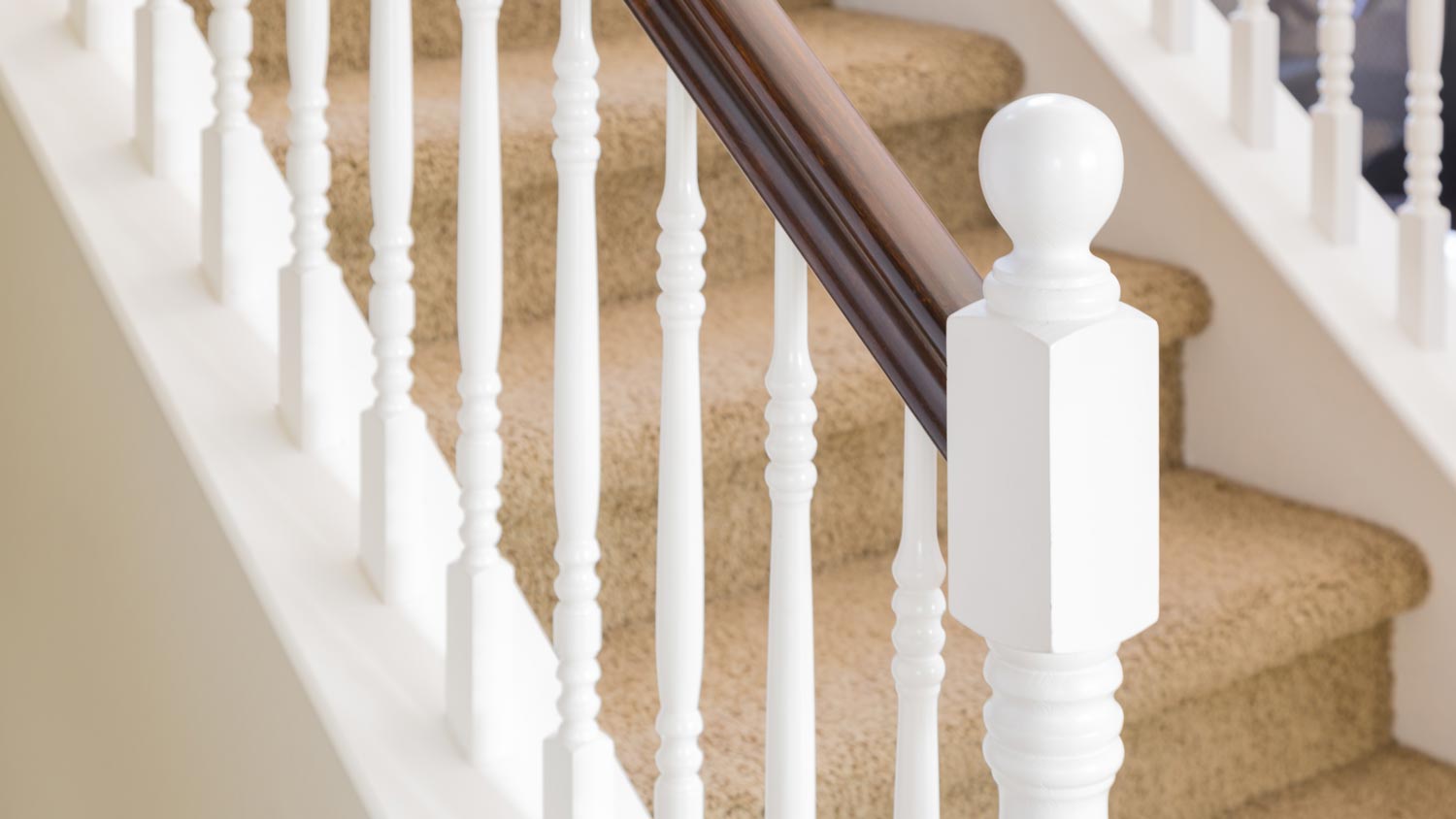
Get expert insights on stair railing repair cost, including average prices, cost factors, and tips to save money. Plan your stair railing repair project with confidence.
It’s a wood versus foam face-off
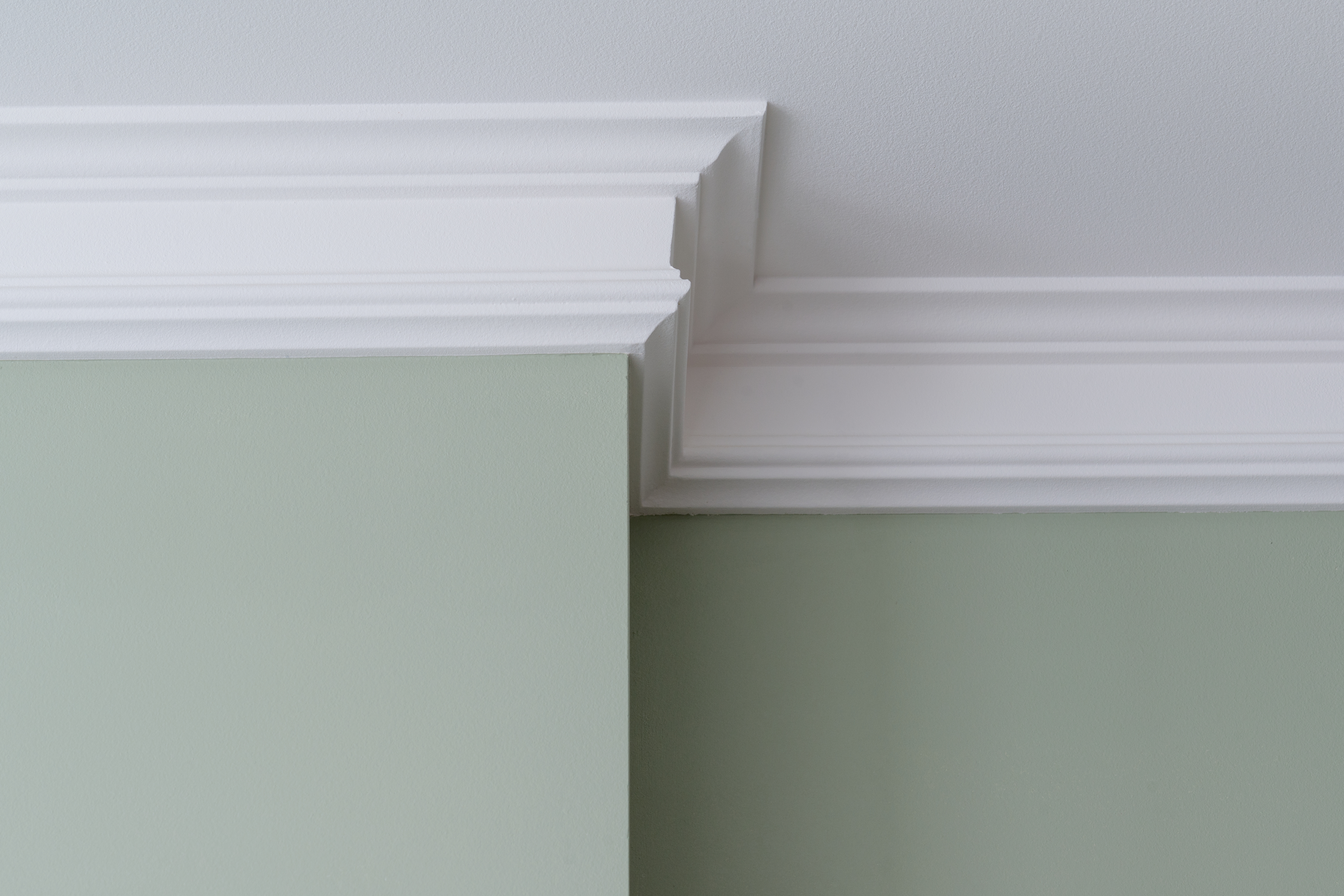

Crown molding trim can consist of many different materials, including wood and foam.
Foam crown molding is lightweight, easy to install, and cost-effective.
Wood crown molding offers a traditional look and can better stand up to stress.
Installing crown molding is a great way to finish the look of a room with a beautiful piece of trim where the ceiling and wall meet. Although wood has traditionally been the material of choice for this trim, it has competition from modern materials. If you’re considering using foam crown molding versus wood, you’re not alone. Homeowners can save some money with foam, but it’s not as durable as wood. Learn more about whether choosing foam or wood will fit your remodeling project better.
Installing crown molding in your home can offer a healthy ROI of between 50% and 80% on average. Thanks to its aesthetic value, your investment return on a premium finish like this will be at the top of that range in high-end or move-in-ready markets.
When comparing foam crown molding versus wood, the appearance of the two materials when viewed from afar is almost identical. Foam molding is less expensive and easier to work with—especially for DIYers—but wood molding has traditional appeal and can better withstand stressful situations.
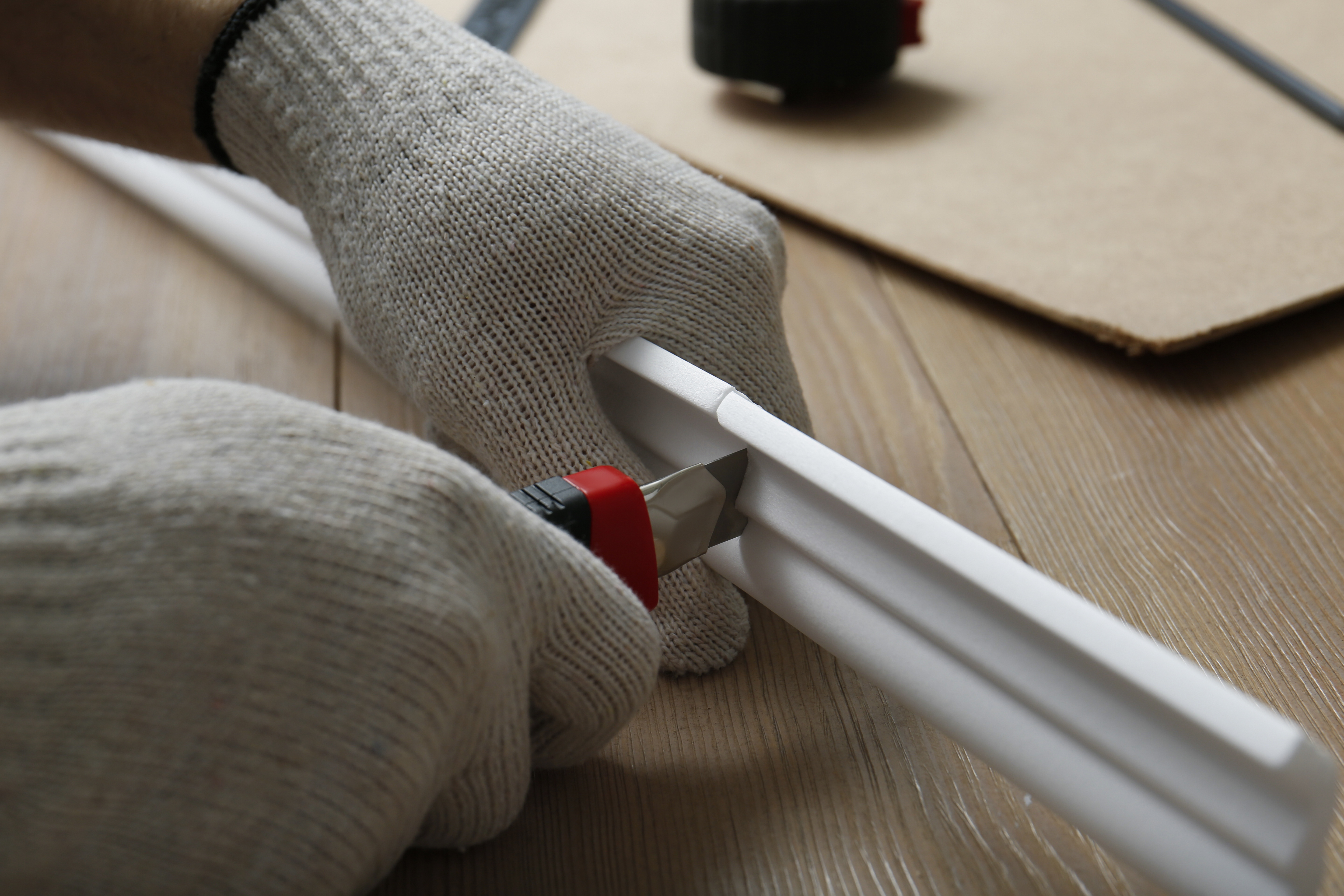
Foam crown molding is a decorative trim piece used near ceilings and sometimes in other areas of a room. It commonly consists of polyurethane or polystyrene foam that’s made to look like wood crown molding. You don’t have to be a woodworking expert to cut foam molding accurately and hang it as a DIY project at your house.
| Pros | Cons |
|---|---|
| Fits modern designs | Non-traditional material |
| Costs less than wood | Some usage limitations |
| Easy to cut and install | Struggles under stress |
Best for:
Installations where nothing will bump into it
People who want an easy DIY installation
Budget-conscious remodeling projects
Foam crown molding costs less per linear foot than wood—and sometimes several times less, depending on the type of wood.
Manufacturers of foam crown molding can make it resemble stained or painted natural wood. They can include decorative lines and intricate designs in the foam that would be pricey to find in wood.
You can cut foam with a utility knife, rather than needing a saw. It’s lightweight and easier for a DIYer to work with than wood molding.
No matter how much it looks like wood, some people will pass on foam crown molding because it’s a non-traditional material for crown molding. People who own older homes with vintage designs might want to stick with wood to match the original materials.
If you have textured finishes on ceilings and walls, foam is not a good choice. The foam molding won’t be able to sit flush against the wall or ceiling because of the raised texture.
When installing foam crown molding in an area where someone might bump into it, such as a chair rail or baseboard, it could be damaged. Wood is far more resistant to impact damage.
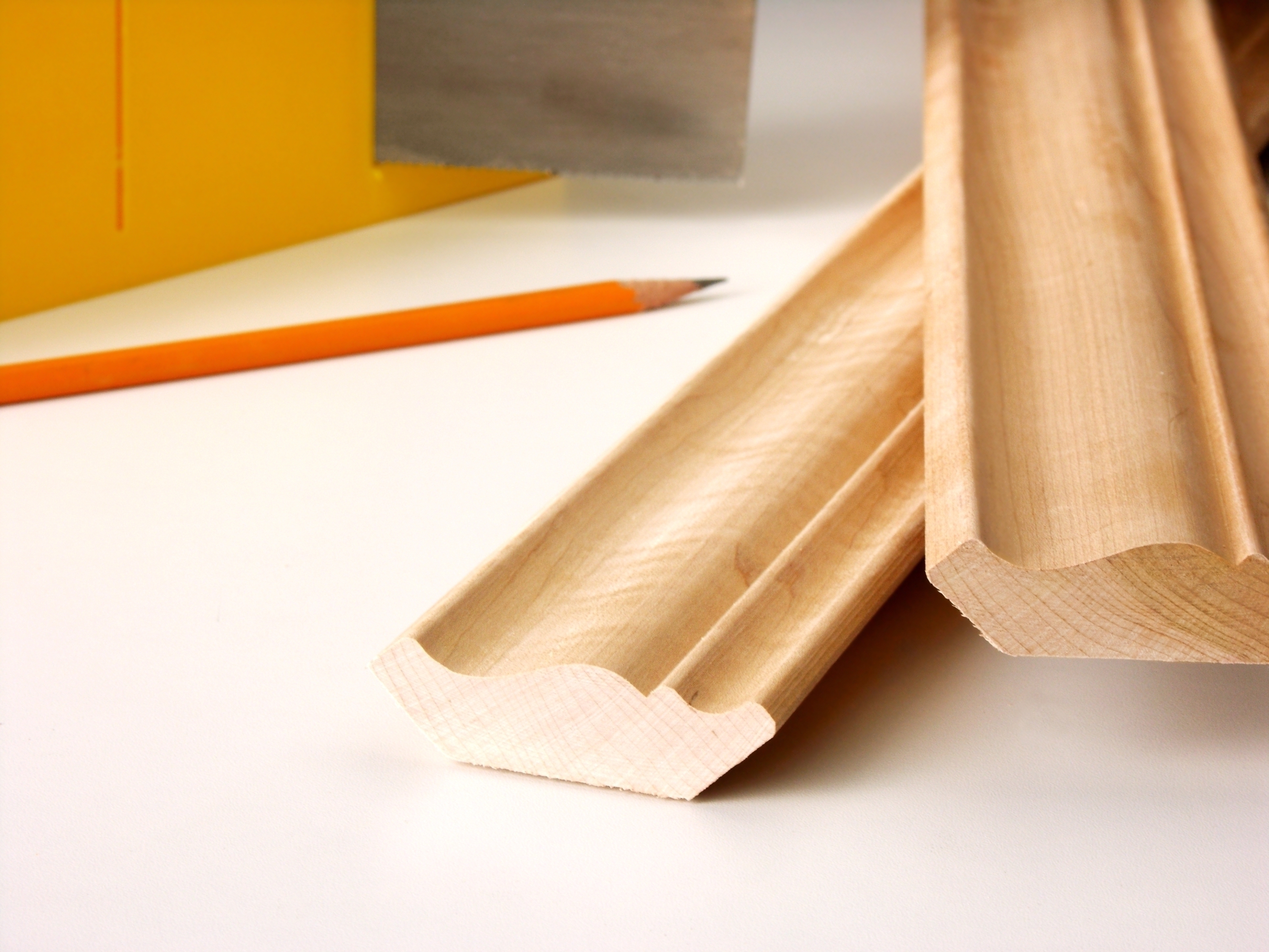
Wood crown molding is a decorative trim piece primarily used where the ceiling meets the wall in a room, although some people will use it in other locations. Many different species of wood work as crown molding. Although other types of crown molding materials are increasing in popularity, wood has centuries of history as the trim and crown molding material of choice.
| Pros | Cons |
|---|---|
| Attractive molding material | Some types are pricey |
| Great impact resistance | Requires maintenance |
| Timeless design appeal | Trickier installation |
Best for:
Homes where traditional molding designs are expected
Areas where it may be placed under stress
People who don’t mind spending a little extra on the project
Even though some wood products can be costly per linear foot, wood is a proven crown molding material for all kinds of homes. If you have an older house, you might want to stick with wood instead of a non-traditional molding material like foam to meet potential buyers' expectations.
For molding that may be in a location subject to impacts, wood will not suffer dents or tears like foam could.
For homeowners who want to cut and hang the crown molding themselves, wood can be challenging to work with, especially if you don’t have the right tools.
If you choose to paint or stain the wood crown molding, you might have to reapply these coatings several years in the future. If the material is in a room with a lot of moisture, like a bathroom with a shower, you might need to do more frequent maintenance.
Perhaps the biggest drawback of wood crown molding is its higher price compared to foam. Some types of wood are close in price to foam, while others are several times more expensive.
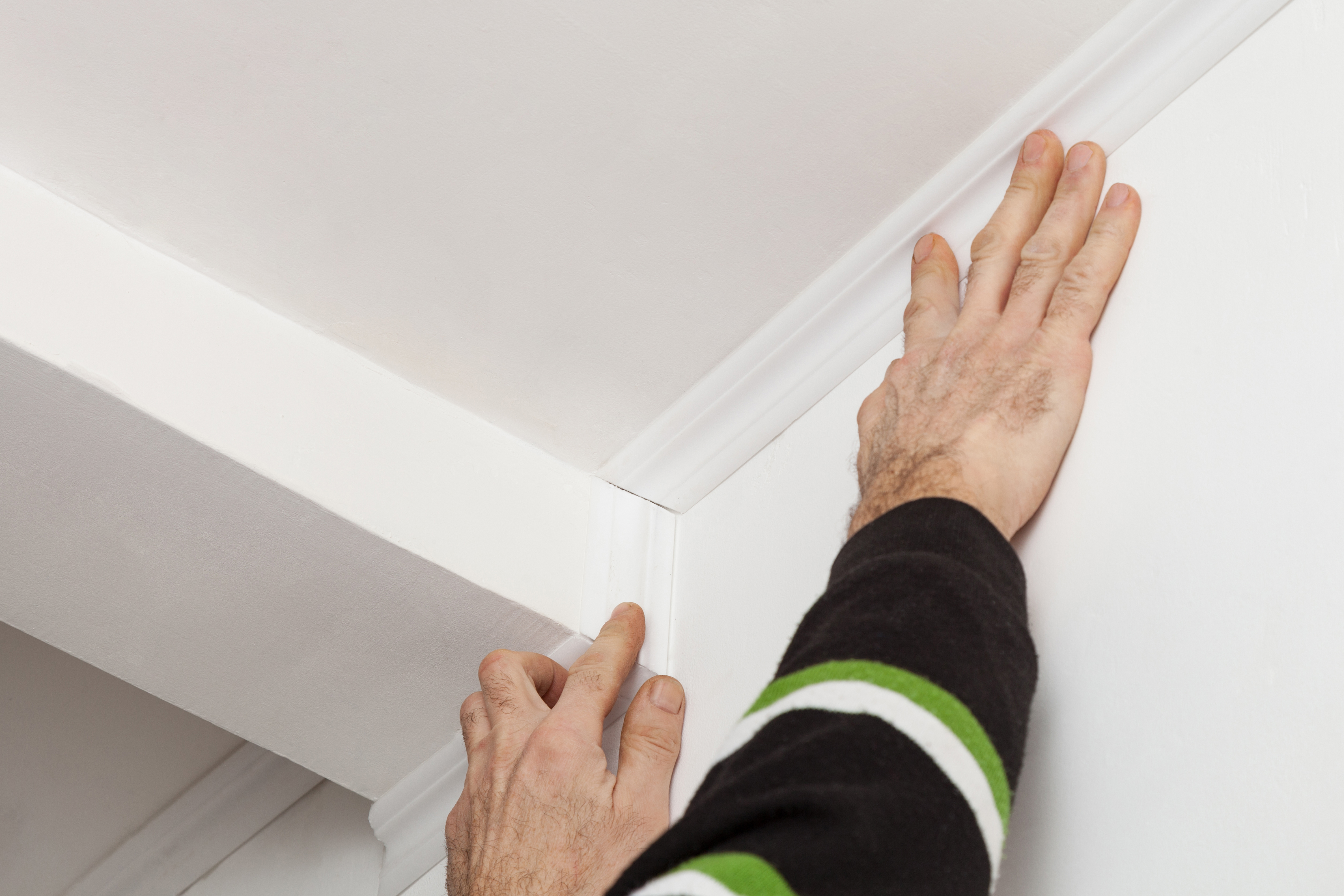
By comparing foam crown molding versus wood in several individual categories, you can determine which material is better for your specific needs.
Once hung, most people can’t easily tell the difference between foam crown molding versus wood crown molding. Manufacturers can make foam that looks exactly like wood molding. However, people who love tradition probably won’t be happy with foam crown molding versus wood, even if they look almost identical.
Crown molding may add value to your home, but it needs to have a high-end design and appearance to provide a sense of style in the house that potential home buyers can feel. In a vintage or luxury home, people would expect you to install wood.
If you’re installing this kind of trim in a location where people or furniture may bump into it, wood is the better choice to avoid indentations and other damage. However, because most people install crown molding where the ceiling meets the wall, the chance of someone bumping into the foam is very low.
Foam’s biggest advantage over wood crown molding is price. Some types of wood, such as oak or exotic woods, are several times more expensive per linear foot than foam.
Consider the cost to install crown molding when creating your budget. On average, wood’s installation costs are about three times those of foam when hiring a pro.
The only area where foam crown molding is difficult to install is against a textured ceiling or wall. The raised texture won’t allow the foam to sit flush.
When working with smooth walls and ceilings, foam is lightweight and easy to cut, meaning a DIYer should be able to install it far more easily than wood molding.
Skilled DIYers can certainly install wood molding, but it is more challenging than foam. If you’re spending money on an expensive type of wood, consider hiring a local crown molding installation pro to do the job well.
Foam does not require any maintenance work. Once it’s hung, it should remain in place without needing repainting or staining. Wood may need sealant applied occasionally to resist shrinkage when used in an area with moisture exposure.
Both foam crown molding and wood should last decades without needing replacement as long as they’re in a location without risk of impact damage.
Because wood is a natural material, it’s more eco-friendly than some types of foam crown molding that could have negative long-term effects on the environment. Polyurethane foam receives the most favorable marks for being eco-friendly among the types of foam used in crown molding.
From average costs to expert advice, get all the answers you need to get your job done.

Get expert insights on stair railing repair cost, including average prices, cost factors, and tips to save money. Plan your stair railing repair project with confidence.

Discover the cost to install a stair railing, including average prices, key cost factors, and tips to save on your project.

Whether you need to heat your home for the winter or simply enjoy lighting a fire occasionally, it's helpful to know the cost of a cord of wood in your area.

While both can perform most carpentry work required for house projects, the major difference between a journeyperson vs. a master carpenter is their years of experience.
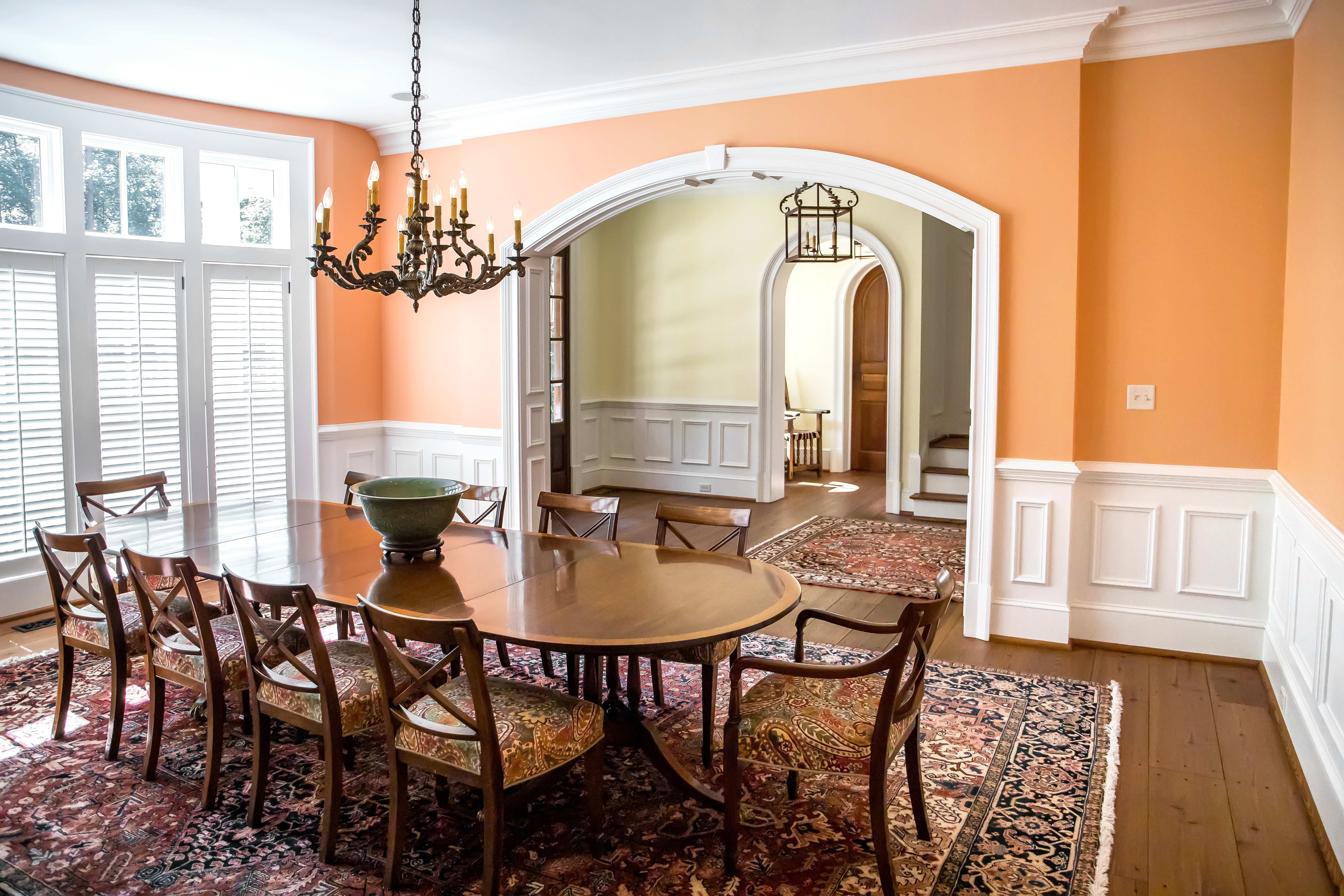
When comparing MDF versus wood crown molding, MDF is easier to install and costs slightly less, but natural wood pairs tradition with a timeless design appeal.

Does crown molding add value to your home? It adds aesthetic value to some designs, but you should install it less because of ROI and more because you love it.